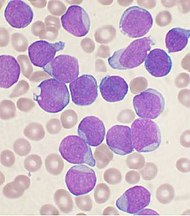OBESITY
Obesity is excess body weight as a result of excessive accumulation of body fat.
Everyone needs some body fat to store energy, as heat insulation, shock absorbent and other functions. The average woman has more body fat than men [citation needed]. Comparisons between normal-weight body fat is around 25-30% in women and 18-23% in men. Women with more body fat than 30% body fat and men with more than 25% are considered obese.
Someone who has a weight 20% higher than the median range of normal weight is considered obese.
Obesity is classified into 3 groups:
* Obesity mild: 20-40% overweight
* Obesity is: 41-100% overweight
* Obesity weight: excess weight> 100% (by weight Obesity is found as much as 5% of the people who are obese).
Attention is directed only to the amount of fat being deposited, but also the location of body fat storage. Patterns of distribution of body fat in men and women tend to be different. Women tend to store up fat in the hips and buttocks, giving a picture like a pear. While the men are usually hoard fat around the abdomen, thus providing a picture of the apple. But it is not something absolute, sometimes in some men look like a pear and some women look like an apple, especially after menopause.
Someone who is fat is much buried in the stomach may be more susceptible to various health problems associated with obesity. They have a higher risk. Pears better picture than the picture of an apple.
To distinguish the two picture, has found a way to determine whether a person is shaped like an apple or pear, namely by calculating the ratio of waist to hip. The waist is measured at the narrowest point, while the hip was measured at the widest point; and waist size divided by hip size. A woman with a waist size of 87.5 cm and 115 cm hip size, waist-hip ratio of 0.76. Women with waist: hip more than 0.8 or men with waist: hip more than 1, said the apple-shaped.
Causes of Obesity
Scientifically, Obesity caused consume more calories than needed by the body. The cause of the imbalance between calorie intake and burning is still unclear.
The occurrence of obesity involves several factors:
- Genetic factors. Obesity tends lowered, so that is thought to have genetic causes. But family members share not only genes but also diet and lifestyle habits, which can promote obesity. Often difficult to separate lifestyle factors with genetic factors. Recent research shows that the average genetic factors influence 33% of a person's weight .
- Environmental factors. Gene is an important factor in many cases of obesity, but a person's environment also plays a significant role. This environment includes behavioral / lifestyle patterns (eg what to eat and how many times a person eats and how their activities). A person certainly can not change the genetic pattern, but he can change their diet and activity.
- Psychological factors. What's on in one's mind can affect eating habits. Many people are reacting to her emotions with food
There are two abnormal eating patterns that could be the cause of obesity is eating in a number of very much (binge) and feed at night (at night eating syndrome). Both diets are usually triggered by stress and disappointment. Binge similar to bulimia nervosa, in which a person eats in a number of very much, except that the binge this is not followed by spewing back what has been eaten. As a result a lot of calories consumed. On the night eating syndrome, is the reduced appetite in the morning and followed by excessive eating, agitation and insomnia at night.
- Health factors. Some illnesses can cause obesity, including:
-Cushing's syndrome
Prader-Willi syndrome o
-Some of the neurological disorder that can cause a lot of eating.
- Drugs.
- Growth factor. The addition of the size or number of fat cells (or both) cause increasing amount of fat stored in the body. Obese people, especially those that became obese in childhood, can have the fat cells to 5 times more than people of normal weight. The number of fat cells can not be reduced, because the weight loss can only be accomplished by reducing the amount of fat in each cell.
- Physical activity. Lack of physical activity is probably one of the main causes of the increasing incidence of obesity in affluent societies. People who do not actively need fewer calories. Someone who tends to eat a diet rich in fat and physical activity are balanced, will be obese.
Excessive accumulation of fat below the diaphragm and the chest wall can suppress the lungs, causing respiratory distress and shortness of breath, even though the patient only a mild activity. Respiratory distress can occur during sleep and causes cessation of breathing for a while (sleep apneu), so that by day people often feel sleepy.
Obesity can cause a variety of orthopedic problems, including lower back pain and aggravate osteoarthritis (especially in the hip, knee and ankle). Also sometimes commonly found in skin disorders. A person who is obese has a body surface that is relatively more narrow than the weight, so that body heat can not be disposed of in an efficient and sweat more. Often found in edema (swelling due to accumulation of fluid) in the leg and ankle.
complication
Obesity is not only unsightly but it is a dire health dilemma. Obesity is directly harmful to one's health. Obesity increases the risk of some chronic diseases such as:
- Diabetes Type 2 (arising in adolescence)
- High blood pressure (hypertension)
- Stroke
- Heart attack (myocardial infarction)
- Heart failure
- Cancer (certain types of cancer such as prostate cancer and colon cancer)
- Gall bladder stones and bladder stones
- Gout and gouty arthritis
- Osteoarthritis
- Sleep apneu (failure to breathe normally while sleeping, causing reduced blood oxygen levels)
- Pickwickian syndrome (obesity accompanied by facial redness, underventilasi and sleepy).
Measuring body fat
Not easy to measure a person's body fat. Following methods require special equipment and is performed by trained personnel:
* Underwater weight, body weight measurements performed in water and then body fat is calculated based on the amount of water remaining.
* BOD POD is an egg-shaped space that has been computerized. Once a person enters the BOD POD, the remaining amount of air used to measure body fat.
* DEXA (dual energy X-ray absorptiometry), bone resembles skening. X-rays are used to determine the number and location of body fat
Two ways is more simple and not complicated:
* Length of skin, skin fold thickness in several parts of the body is measured by the term (a metal tool that resembles a forceps).
* Bioelectric impedance analysis (analysis bioelektrik prisoners), the patient stands on a special scale and a number of harmless electrical current is passed through the body and then analyzed.
The examination can give inaccurate results if not done by experts.
Measurement of body weight according to WHO (2010) can be done by dividing weight by height squared. This is called the body mass index (BMI).
Table weight-height
This has been used for a long time to determine whether someone is overweight. Tables usually have a weight range for a particular height.
The problem that arises is that we do not know where the best tables to be used. Many tables can be used, with a variety of different weight range. Some tables include frame size, age and sex, the table that others do not.
Disadvantages of this table is the table does not distinguish between excess fat and excess muscle. Seen from the table, a very muscular person may appear obese, when in fact not.
BMI (Body Mass Index, BMI)
BMI is a measurement of the linking (compare) body weight to height. Although called "index", the actual BMI is a ratio or a ratio expressed as weight (in kilograms) divided by height squared (in meters). Someone said if you are obese have a BMI value of 30 or more.
the formula:
Metric units according to the international unit system
:

formula :
:

| BMI | Klasifikasi |
|---|---|
| < 18.5 | berat badan di bawah normal |
| 18.5–24.9 | normal |
| 25.0–29.9 | normal tinggi |
| 30.0–34.9 | Obesitas tingkat 1 |
| 35.0–39.9 | Obesitas tingkat 2 |
| ≥ 40.0 | Obesitas tingkat 3 |
treatment
Calorie restriction and increased physical activity is the most important component in the regulation of body weight. These two components are also important in maintaining weight after weight loss. Must be a change in the pattern of physical activity and begin to live healthy eating habits.
The first step in treating obesity is to assess body fat and health risks by calculating BMI. Health risks associated with obesity will increase with increasing BMI:
* Low risk: BMI <27The first step in treating obesity is to assess body fat and health risks by calculating BMI. Health risks associated with obesity will increase with increasing BMI:
* High risk: BMI 27-30
* High risk: BMI 30-35
* The risk is very high: BMI 35-40
* The risk is very high: BMI of 40 or more.
The type and severity of exercise, and calorie restriction on each patient is different and medication is adjusted to circumstances.
* Patients with low health risk, the diet was (1200-1500 calories / day for women, 1400-2000 calories / day for men) along with sports
* Patients with a high health risk, low-calorie diet (800-1200 calories / day for women, 1000-1400 calories / day for men) along with sports
* Patients with a high health risk or very high, get anti-obesity drug with a low calorie diet and exercise.
Choosing a weight loss program is safe and successful. The elements to consider in choosing a weight loss program:
* Diet should be safe and meet all of the recommended daily requirements (vitamins, minerals and protein). Diet to lose weight should be low in calories.
* Weight loss program should be directed to the weight loss slow and steady.
* Before a weight loss program begins, a thorough medical examination.
* The program that followed should include weight maintenance after weight loss is achieved. Weight maintenance is the hardest part of weight control. The selected programs should include changes in eating habits and physical activity are permanent, to change lifestyles in the past to support the weight gain. This program must hold a change of behavior, including education in healthy eating habits and long-term plan to address the weight problem.
Obesity is a chronic condition (chronic). Obesity is often considered a temporary condition that can be resolved for several months with a strict diet. Weight control is a long-term effort. To be safe and effective, any weight loss program should be aimed at long-term approach













